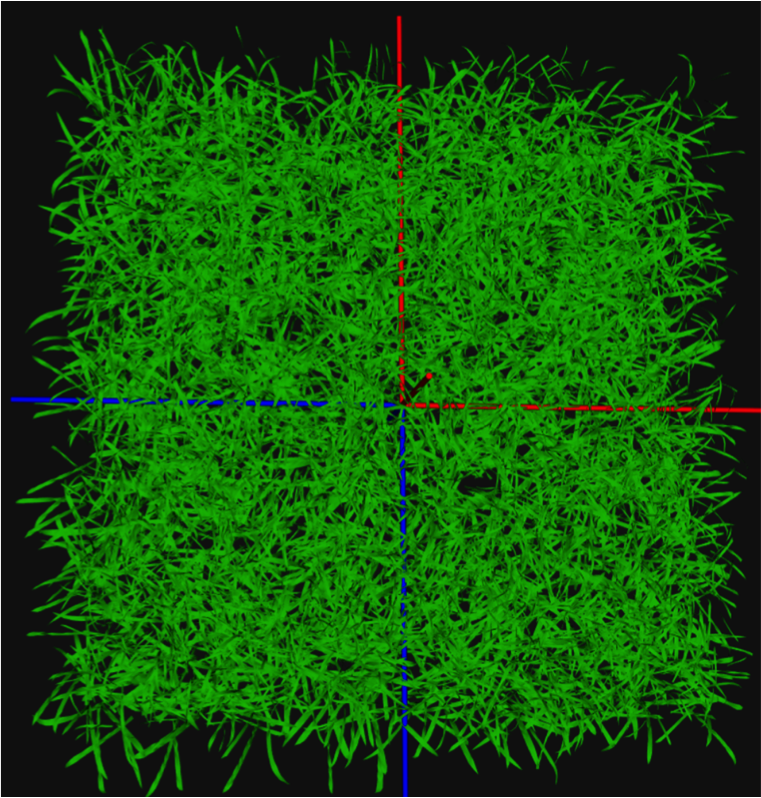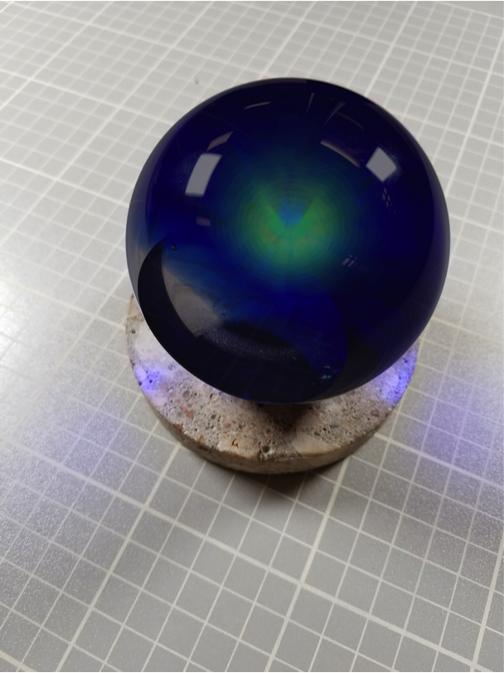May 2, 2019
K-State team combines science, art and math to help feed the future
Four Kansas State University faculty have found an unexplored mathematical sweet spot between probability, differential equations and statistical simulation that can help predict genetic performance of major crops, such as wheat — a task critical to meeting food security needs from 2030-2050, and beyond. Students are invited to help with the project.
The four include Nathan Albin, associate professor of mathematics; Nora Bello, associate professor of statistics; Stephen Welch, professor of agronomy; and Luke Dempsey, exhibitions designer at Marianna Kistler Beach Museum of Art. They are part of a large multi-institutional National Science Foundation project, whose aim is to build a new computer model of wheat that combines crop physiology and genetics and state-of-the-art field monitoring techniques.
 |
| Figure 1: A 3D simulation of 10,000 wheat leaves covering about 4 square yards. About 900,000 numbers are required to describe just this small area. |
A central modeling problem is how to represent the enormous amounts of variation that exists within a field in ways that are computationally efficient. Variation exists for all quantities and scales from soil moisture and nutrients across the field to the sizes and growth rates of individual plant parts (Fig. 1). This variation morphs with time as the crop responds to specific weather events in each year and field.
The team is exploring a novel way to advance 30-year-old work that links the time-varying traits of a representative individual to the probability distributions of those characteristics across a field. They now seek to incorporate the methodology into various data sampling and statistical analyses.
"This sort of interdisciplinary team research is letting me take statistical theory and methods in directions that would otherwise not be possible," Bello said.
Digital artist Luke Dempsey is helping to display such complex outputs in comprehensible form. Fig. 2 shows how a tabulation of multiple traits Fig. 1 will look. Beach Museum Director Linda Duke envisions "a time in the near future when researchers with virtual reality headsets will walk around 'inside' such summary visualizations and witness a whole season's growth in a few minutes time as moving regions of color."
 |
| Figure 2: Photoshopped canopy visualization showing a higher density (green) of leaves low in the canopy oriented at various angles. |
The project also incorporates a unique opportunity this fall for motivated juniors, seniors and graduate students with quantitative and/or digital art experience. Students enrolling in Math 799 Mathematics of Crop Models will work as teams with multiple skills to advance the tools and methodology.
"Guest lectures by others in the NSF project will inform the activity, but the focus of the course will be to empower students to make their own team contributions to the effort," Albin said. "While crop experience is in no way a prerequisite, having some students with such knowledge will be helpful."
Students will also gain computing skills in the context of math and statistical tasks important to feeding the future.
"Tipping points like the one we are approaching create rare and unusual opportunities for sensitive leveraging," said Welch. "We believe that those able to participate in Math 799 will not only get to work with creative concepts and ideas not found in textbooks but to make far-reaching contributions in the process."
